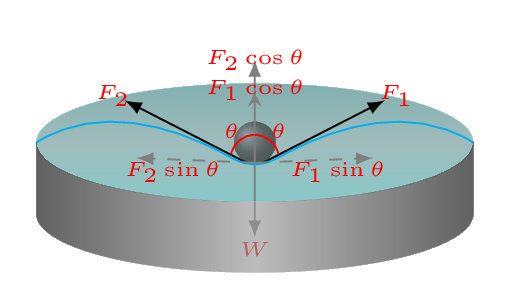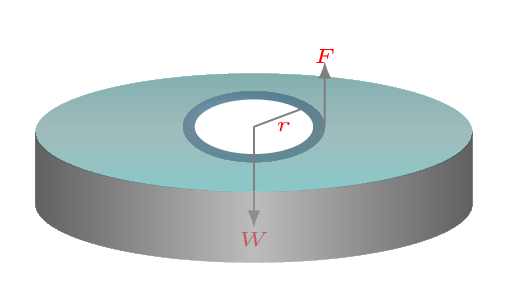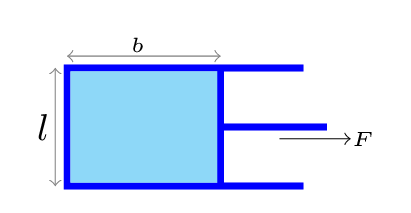Example 9.6.1.
A fluid moves along length 0.75 m with velocity 2m/s and has shearing stress of \(2 \,N/m^{2}\text{.}\) Calculate its viscosity.
Solution.
Given: Velocity, v = 2m/s, length, L = 0.75 m, shearing stress, \(p = 2 N/m^{2}.\)
The shearing stress is given by,
\begin{equation*}
F = \eta A \frac{v}{L}
\end{equation*}
\begin{equation*}
\text{or,} p =\frac{F}{A} =\eta \frac{v}{L}
\end{equation*}
\begin{equation*}
\therefore \quad \eta = \frac{pL}{v} = \frac{2 \,N/m^{2}\times 0.75 \,m}{2 \,m/s}
\end{equation*}
\begin{equation*}
= 0.75 \,Ns/m^{2} = 0.75 \,Pa.s = 7.5 \,Poise
\end{equation*}



